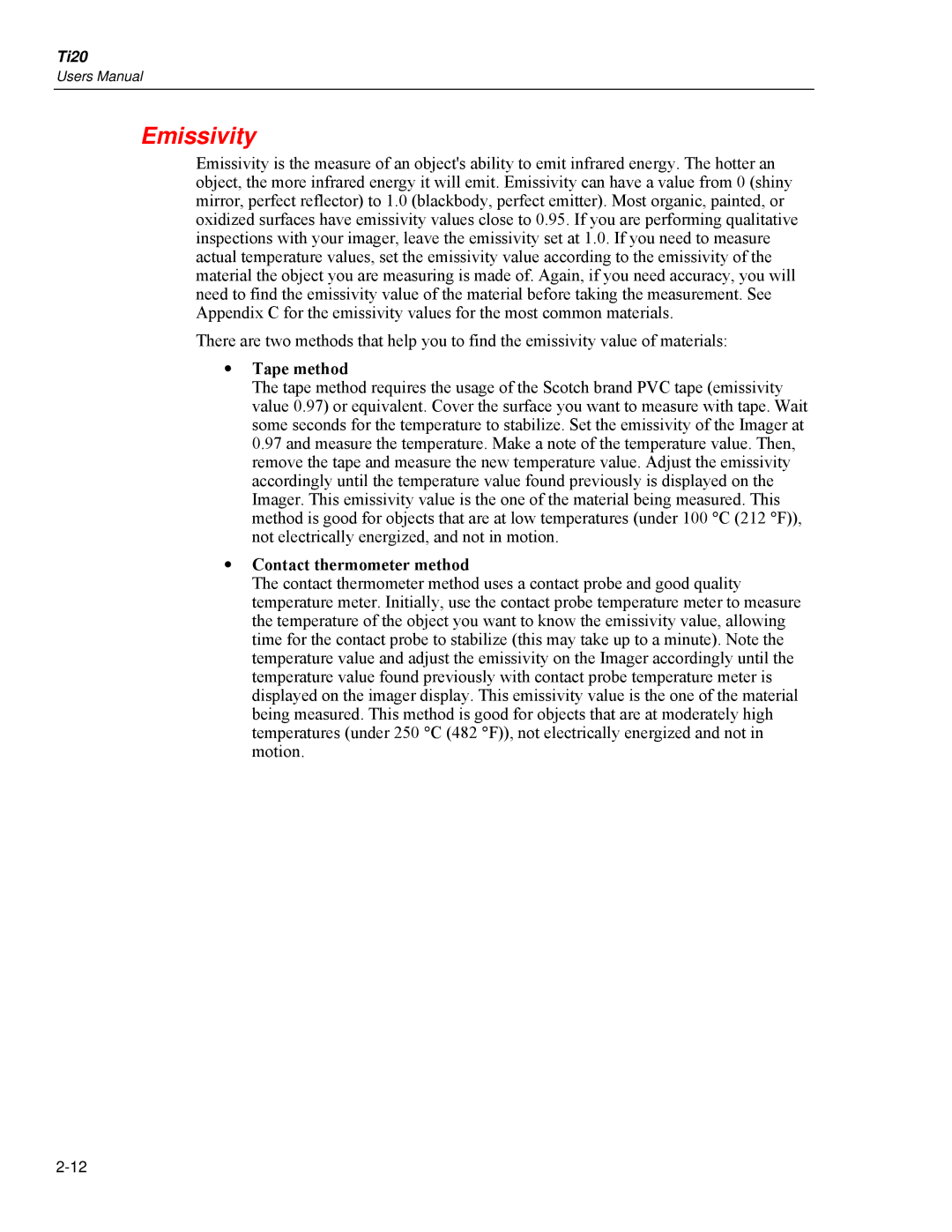Ti20
Users Manual
Emissivity
Emissivity is the measure of an object's ability to emit infrared energy. The hotter an object, the more infrared energy it will emit. Emissivity can have a value from 0 (shiny mirror, perfect reflector) to 1.0 (blackbody, perfect emitter). Most organic, painted, or oxidized surfaces have emissivity values close to 0.95. If you are performing qualitative inspections with your imager, leave the emissivity set at 1.0. If you need to measure actual temperature values, set the emissivity value according to the emissivity of the material the object you are measuring is made of. Again, if you need accuracy, you will need to find the emissivity value of the material before taking the measurement. See Appendix C for the emissivity values for the most common materials.
There are two methods that help you to find the emissivity value of materials:
•Tape method
The tape method requires the usage of the Scotch brand PVC tape (emissivity value 0.97) or equivalent. Cover the surface you want to measure with tape. Wait some seconds for the temperature to stabilize. Set the emissivity of the Imager at 0.97 and measure the temperature. Make a note of the temperature value. Then, remove the tape and measure the new temperature value. Adjust the emissivity accordingly until the temperature value found previously is displayed on the Imager. This emissivity value is the one of the material being measured. This method is good for objects that are at low temperatures (under 100 °C (212 °F)), not electrically energized, and not in motion.
•Contact thermometer method
The contact thermometer method uses a contact probe and good quality temperature meter. Initially, use the contact probe temperature meter to measure the temperature of the object you want to know the emissivity value, allowing time for the contact probe to stabilize (this may take up to a minute). Note the temperature value and adjust the emissivity on the Imager accordingly until the temperature value found previously with contact probe temperature meter is displayed on the imager display. This emissivity value is the one of the material being measured. This method is good for objects that are at moderately high temperatures (under 250 °C (482 °F)), not electrically energized and not in motion.
